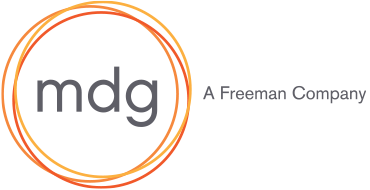
It’s far too easy, as business-to-business marketers, to forget that we are not, in fact, marketing to businesses. We’re marketing to people—people who have hopes, dreams, fears, ambitions, aspirations and other deep feelings about their careers, industries, professions and livelihoods. When we forget about these emotions, and the ability they have to compel participation at our events, we have a tendency to place too much emphasis on how many square feet of space our show floor covers, the number of educational sessions we offer, our 50th anniversary year and/or other features that do very little to convert our fence sitters to registrants. How can you use emotions to drive attendance at your next event?
Step 1: Do your homework
Go beyond the demographic data you’ve compiled on your prospects and dig deep into psychographics. Conduct qualitative research. Develop attendee personas. Test your messages to discover what’s resonating. Ask the right questions. You might be surprised by how many actionable insights you’ll discover by posing questions like, “What are you most worried about affecting your career/organization over the next 12–18 months?” versus “Why didn’t you attend our show this year?” When you ask the latter, you’ll likely get time and money objections that are shorthand for “your show isn’t relevant enough to my needs,” but you won’t have learned anything about how to make it so.
Step 2: Feel all the emotions
Or at least understand the gamut that might impact your attendees’ decision to attend. Consider:
- FOMO. This is the “fear of missing out” and is a huge driver of event attendance, especially among millennials. Paint a picture of your event as a once-a-year gathering of the “who’s who” of your industry, where products are launched, new ideas are introduced, trends take shape, deals are done and inspiration abounds. Appeal to your attendees’ natural fear of being left out, left behind or becoming irrelevant.
- Career ambition/aspiration. Many years ago, mdg marketed a conference designed for a specific type of (seemingly unemotional) accountant. Our initial research revealed that these professionals loathed being mistaken as cost accountants and desperately wanted to ensure they had a seat at the leadership table within their organizations. Understanding this common career goal helped us position the conference program as a tool they could use to elevate their professional standing.
- Personal passions. There are some industries where it’s clear attendees have turned their personal passions into professions, including those that focus on pets, cars, sports, hobbies, fashion, food, etc. However, there are others that may not be so obvious. Just talk to attendees at World of Concrete and you’ll hear them saying things like, “Coming to World of Concrete is better than going on vacation!” We’ve found similar enthusiasm for events that cover audiovisual, retailing, energy, technology and more—and we always aim to connect that passion to their participation at their industry show.
- Keep digging. Ideally, Step 1 will reveal the relevant emotions to consider in Step 2, which might be any or all of the above, plus excitement, hope, a sense of belonging, a desire for recognition and/or other emotions that might not be so obvious, as was the case with our accountants.
Step 3: Use what you’ve learned
Write compelling copy, use dramatic visuals, make interesting videos, further humanize your approach to social, etc., to reflect this new and improved messaging strategy. Remember you are speaking to another human being who needs to know what’s in it for him or her. Too often we think about “justification” in relation to an employee having to sell a manager and we forget that we must first facilitate “personal justification.” Make an argument so persuasive that prospects would pay their own way if they had to do so. Lose trite business clichés and aim for authenticity instead. Use a tone of voice with which your audience will relate. Avoid hyperbole, marketing jargon and fluff.
This content originally appeared in mdg’s “News You Can Use” article from Trade Show Executive, April 2017.


